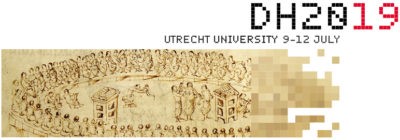Some examples of DH at Utrecht University
Humanities (CLARIAH)
- In Dutch Anthem stylometry enabled the identification of a new candidate for the authorship of the Dutch national anthem.
- The dynamics between creative industries in the making of the Dutch Golden Age is explored in Golden Agents.
- Time in translation develops a micro-typology of the Have Perfect, using equivalences between English, Dutch, German, French and Spanish
- GRETEL 4 is an application for the analysis of grammatical constructions in Dutch, with a Query-By-Example functionality.
- The Data Legend tool suite integrates structured socio-economic history data in the CLARIAH Linked Open Data infrastructure.
- The CLARIAH Media Suite is a data aggregator enabling the exploration and enrichment of media metadata and content.
- A showcase is The Utrecht Psalter, which features the famous ninth-century Utrecht Psalter, fully digitized and annotated.
- Georeferencing is an impressive example of crowdsourcing: in a short period of time, members of the general public correctly placed 998 historical maps on a contemporary map.
- Utrecht printers online offers an overview of the printers present in Utrecht during the sixteenth and seventeenth centuries.
- Music is an important theme at Utrecht. One project is The hooked game, a game that looks into the catchiness of music.
- The Dutch song bank, a musical database for Dutch folk songs which allows users to search by means of a melody.
- RISM search contains about a million items documenting musical sources.
- On another level, Time capsule is a query machine providing insight in pharmaceutical heritage.
- Artechne is a database containing fully searchable digitized sources on artisanal techniques spanning four centuries (1500-1900) in a variety of languages.
- The Museum Catharijneconvent, which is interested in personal memories about objects in the museum, commissioned Catharijneverhalen, a web application that enables crowdsourcing of personal stories.
- Microcontact helps to make available linguistic data Romance languages, collected through crowdsourcing and fieldwork.
- The I-analyzer allows researchers to use full-text search on a range of uploadable corpora, with functions for visualizations, filtering, stopword removal, normalization and stemming.
Photo: anon
Excerpt from Utrecht Psalter
